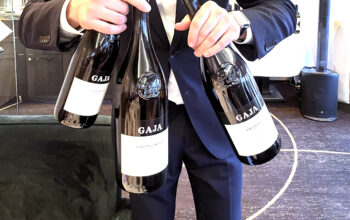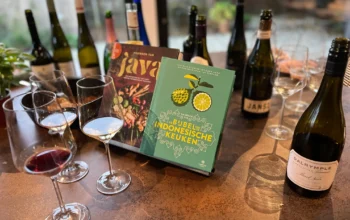It's winter and so caquelons are popping up again everywhere for a warm and satiating cheese fondue. After reading this report you will also have a great story to tell when serving the dish, because WINELIFE travelled to the cradle of cheese fondue: the Fribourg region of Switzerland. From cow to cheese fondue in two thousand words. Text Katja Brokke, image Katja Brokke, Vully Tourisme, Fribourg Region E.A.
François Raemy shakes his head when I present a theory about how cheese fondue ever came to be. There wasn't such a cheese surplus in Switzerland that they started melting it, the cheese master doesn't believe that. After all, Swiss cheeses have a long shelf life, so why start melting them? Rather, he thinks it was discovered by chance after a cheese started melting in the sun. What we do know is that cheese fondue was first written about in 1699. While we are philosophising about the origins of the Swiss dish, François is stirring in a caquelon filled with grated vacherin Fribourgeois, gruyère and some white wine.
Gruyère and vacherin
We are at La Fondue Academy in the mountain town of Gruyères in the Swiss region of Fribourg, a bilingual canton between Bern and Lausanne. Gruyère is made in these mountains, a cheese that was first exported to Lyon in 1700 and from there conquered the rest of the world. Together with vacherin Fribourgeois, it forms the main ingredient of cheese fondue moitié-moitié (half-and-half), the most famous version of the dish. Another form is cheese fondue vacherin with 100 per cent vacherin, a younger and softer cheese than gruyere. Together they form the two most important cheeses of the region, where 160 cheesemakers operate. A cheese's journey starts with the milk from the farmer. This is delivered to the cheesemakers. Under strict control, they make the cheeses, which then mature in the cellars. From there, they are delivered to distributors. Both gruyere and vacherin have been produced for hundreds of years: 700 and 500 years respectively.
In the mountains
Both showpieces are made from the milk of cows that graze in the meadows of the foothills of the Alps in summer and in their stables in winter. This has been done since 400 AD. The milk is then transported to cheesemakers in lower elevations or used to make cheese in mountain huts. By complying with certain rules, it is then allowed to use the 'd'Alpage' certificate. More on that later.
One of the alpine huts where cows graze is Buvette le Vuipay of the Liaudat family in the Paccots region, at 1,478 metres altitude. Here they not only milk their 40 cows, they also make gruyère, vacherin, tommes, sérac and cream. The milk they don't use themselves, they supply to other cheese makers. Because the animals graze in the Alps and the cheeses are made on wood fire, you can taste the forest, flowers and wood in the final product. Buvette le Vuipay is open all year round and can be visited in winter by taking a long snowshoe hike to the top and then, after devouring a cheese fondue and some wine, descending again by sledge. In summer, you can see how Alpine cheese is made and in autumn, the Liaudat family, like all mountain farmers, move their cows to the village to spend the winter. During this so-called Almabtrieb, both farmer and cattle dress up festively in traditional attire and garlands of flowers. On carts are the cheeses made in the huts and work utensils. The whole village stands aside to welcome the farmers and thank them for their hard work in the mountains.
Don't want to miss a single edition? Subscribe then subscribe to Winelife magazine now!
Read the entire article in WINELIFE #62




